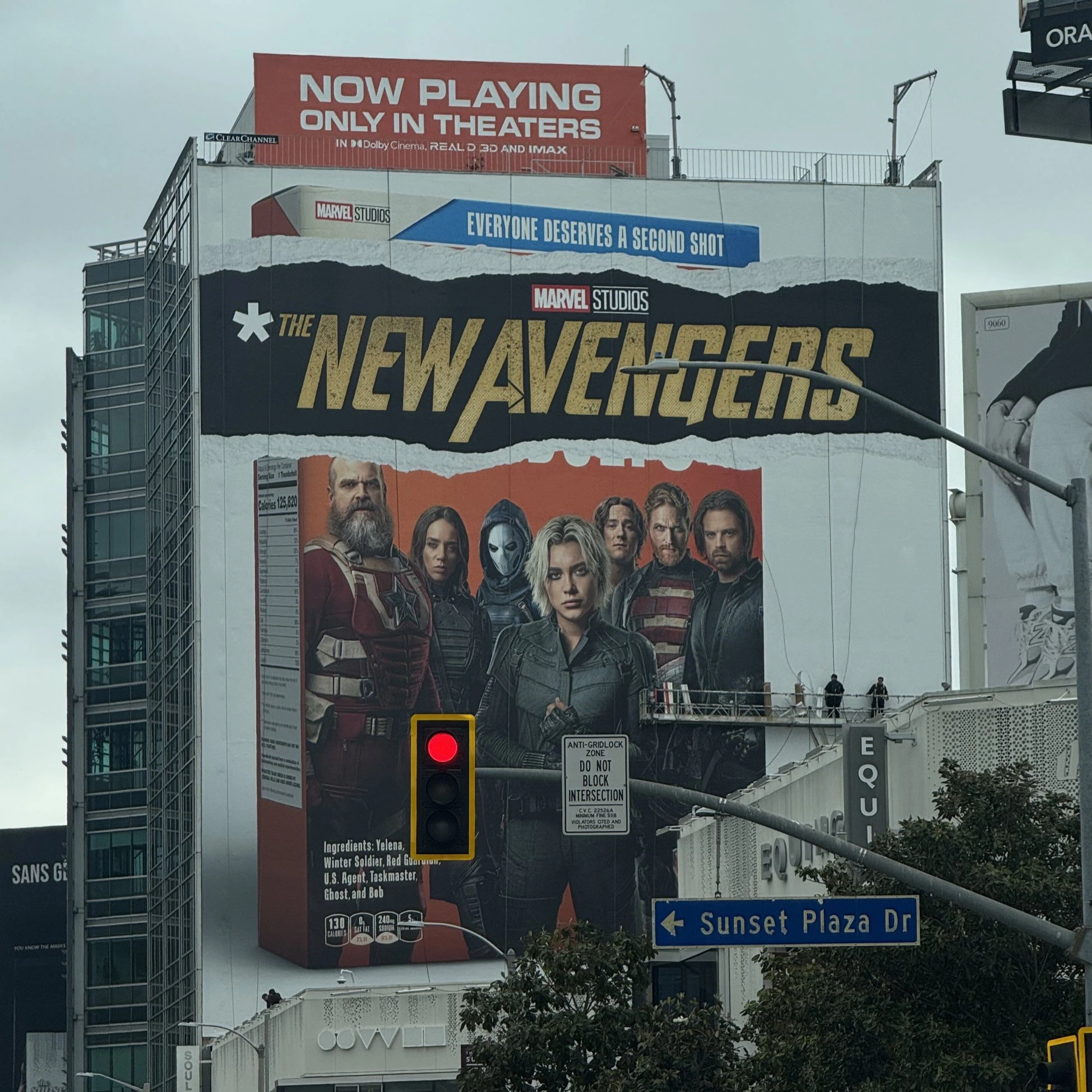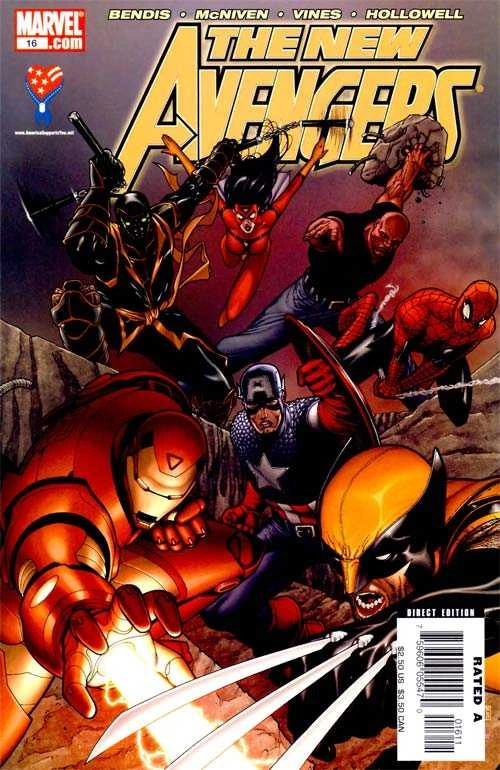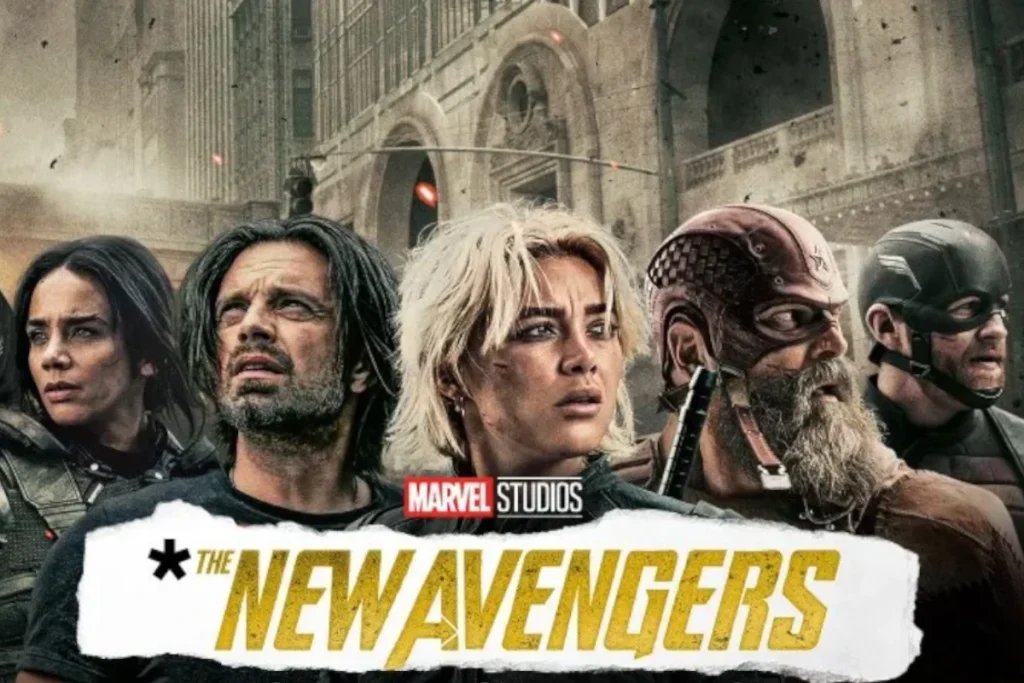Marvel Studios has executed a bold marketing pivot for Thunderbolts*—now unveiled as The New Avengers—leveraging in‑film storytelling to real‑time promotional materials. After the film’s opening weekend, key posters and billboards in Los Angeles were rebranded, literally ripping off the “Thunderbolts*” title to reveal “The New Avengers,” mirroring the narrative twist in which Valentina Allegra de Fontaine announces the team’s true name in the third act . The asterisk that had puzzled fans now serves as a storytelling device, and Marvel’s swift title swap on Fandango and other ticketing platforms mirrors this in‑movie reveal . Director Jake Schreier confirms this was always part of the plan, designed to feel organic rather than a last‑minute stunt, and underscores Marvel’s penchant for integrating marketing with narrative surprises.
The Narrative and Marketing Convergence
Thunderbolts* Title Change
Marvel officially commenced the thunderbolts title change on billboards and digital platforms three days after release, unveiling “The New Avengers” beneath the original poster’s asterisked title . This move capitalizes on the film’s plot twist—when Valentina Allegra de Fontaine (Julia Louis‑Dreyfus) reveals the team’s new moniker—to generate social‑media buzz and encourage re‑engagement from opening‑weekend audiences . Fandango and other ticket vendors updated their listings, ensuring that prospective moviegoers immediately understand that Thunderbolts is the new Avengers* story in disguise.

Asterisk Explained (“thunderbolts name change”)
The hidden asterisk notation—once a source of fan speculation—now clearly denotes Marvel’s intentional misdirection: the on‑screen heroes branded as the Thunderbolts are, in fact, the next generation of Avengers . Jake Schreier notes that because the asterisk had been in place for a year, the sudden reveal “doesn’t feel sweaty—it feels like this was a plan and we built up to it” . This strategic integration of plot and promotion exemplifies Marvel’s evolving approach to transmedia storytelling.
Who Are the New Avengers in the Comics and Film?
Comic Book Origins

In Marvel Comics lore, the New Avengers debuted in 2005 as a response to superhero registration conflicts, featuring Earth’s Mightiest in a clandestine team-up . Core members included Luke Cage, Spider‑Man, Wolverine, and others—contrasting with the government‑sanctioned Thunderbolts lineup.
Is Thunderbolts The New Avengers In The MCU?

Is Thunderbolts the New Avengers in the MCU? (Image Credit: Marvel)
On‑screen, the team comprises antiheroes Yelena Belova (Florence Pugh), Bucky Barnes (Sebastian Stan), Red Guardian (David Harbour), John Walker (Wyatt Russell), Ghost (Hannah John‑Kamen), and Sentry (Lewis Pullman) . Their transformation into the New Avengers marks a tonal shift: from coerced operatives to public‑facing heroes grappling with legacy and identity.
Thunderbolts Post Credit Scene
Marvel’s signature post‑credits sequence fast‑forwards 14 months, showing the New Avengers inhabiting the former Avengers HQ—now dubbed the Watchtower—and embroiled in a copyright dispute with Captain America (Anthony Mackie) over the Avengers logo . A further surprise features the Fantastic Four’s spacecraft entering Earth’s orbit from another dimension, directed by the Russo brothers for Avengers: Doomsday, setting up the next chapter in the MCU .
Future Installments For The MCU
Avengers: Doomsday and Beyond
The title revelation dovetails into the upcoming Avengers: Doomsday (2026), where the New Avengers will likely team up with legacy heroes and the Fantastic Four against looming threats, including Robert Downey Jr.’s mega‑villain . Marvel’s blending of marketing and story arc promises increased fan engagement and cross‑title continuity.
Brand Evolution
This pivot underscores Marvel’s willingness to embrace risk by aligning promotional strategies with plot revelations—a tactic that both rewards dedicated fans and piques casual audiences’ curiosity . The synchronized swap of physical and digital assets illustrates a maturing cinematic universe that sees marketing as an extension of storytelling.


